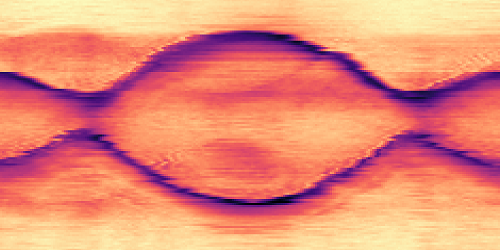• Physics 17, s46
A method for freely adjusting the parameters of a loop of optical fiber enables the exploration of exotic topological phases of matter.
A material’s properties are greatly influenced by the ways in which its constituent atoms couple to each other. For example, diamond’s exceptional hardness and thermal conductivity result from the tight and symmetric coupling of the crystal’s carbon atoms. Now Philippe St-Jean at the University of Montreal and his colleagues demonstrate a photonic analog platform for studying such couplings [1]. Using the platform, scientists can emulate materials in which any atom is coupled to any other atom, allowing them to explore a wide range of topological phases of matter not exhibited by ordinary materials.
The photonic platform is based on a single loop of optical fiber. Inside this loop, light can travel in different modes, each characterized by a specific frequency. These modes represent the electronic orbitals of atoms, and the regularity in the frequency difference between modes reflects the spatial periodicity of a chain of chemically bonded atom pairs known as dimers. The coupling between each pair of modes can be controlled by locally varying the loop’s refractive index using a device called an electro-optical modulator.
To demonstrate the customizable nature of their platform, St-Jean and his colleagues manipulated the couplings between modes and their nearest neighbors and between modes and their third-nearest neighbors. They then used the system to explore previously unseen topological phases of matter exhibited by dimer chains and transitions between those phases. In addition to the platform’s ability to emulate topological matter, the researchers say that it has other uses. Its adjustability could lead to improved lasers, quantum sensors, and neural networks.
–Ryan Wilkinson
Ryan Wilkinson is a Corresponding Editor for Physics Magazine based in Durham, UK.
References
- F. Pellerin et al., “Wave-function tomography of topological dimer chains with long-range couplings,” Phys. Rev. Lett. 132, 183802 (2024).



